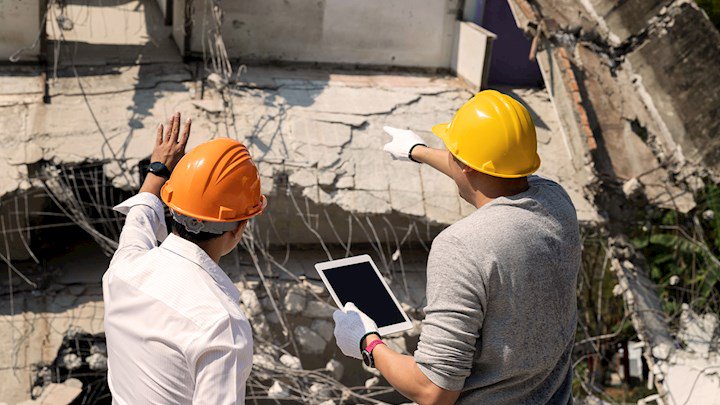When you think of our great cities, many landmarks come to mind, such as the Statue of Liberty, Independence Hall, the National Mall, the Gateway Arch, the Hollywood sign, the Golden Gate Bridge and Space Needle.
What also stands out in cities across the U.S. is the amount of scaffolding, construction hoists, elevators, mast climbers and swing staging that is a part of our landscape. It dots buildings in neighborhood after neighborhood, as each construction project of new builds, renovations and maintenance takes place.
To understand why the scaffolding industry in the U.S. was worth an estimated $13.7 billion in 2020*, just walk through any major city — especially New York City. You'll see scaffolding everywhere.
And the contracting firms installing, erecting and dismantling all that scaffolding and other equipment used for construction access all require coverage to protect against their unique hazards and builders risk.
Third-Party Liability Protection
While this coverage is difficult to obtain in the market, for more than 40 years, RPS has provided a multi-line Scaffolding and Access insurance solution designed to address the complex exposures of scaffolding firms and the construction. In fact, RPS writes about 45% of the insurance for scaffolding companies across the country.
"We offer several key coverages in our program," explains Rikki Concannon, RPS senior broker relationship manager, "including General Liability, Commercial Automobile, Excess Liability, Workers' Compensation and Inland Marine — for the equipment itself, equipment rented to third parties, and in-transit equipment."
RPS's General Liability product provides coverage in the event of third-party injuries that occur during installation, while the scaffolding remains on the façade of the building and during dismantling.
For example, let's say high winds cause pieces of the scaffolding structure to fall, injuring pedestrians on the sidewalk below. The General Liability insurance policy will respond. It will also pay for property damage, such as to vehicles damaged by falling scaffolding.
You can provide clients with General Liability limits of $1M/$2M/$2M or $2M/$4M/$4M.The Excess Liability policy extends the underlying liability limits to provide a total of $6M in limits.
Covering Workers at Risk
Workers who assemble and dismantle scaffolds are at particular risk of injury and are covered under RPS's Workers' Compensation policy.
"Additionally, in New York City, workers can also sue their employer or property owner under the city's labor laws claiming that an unsafe work environment and negligence caused the injury, and our General Liability policy would respond," notes Concannon.
Any general contractors working on the building can also be injured if the scaffolding collapses due to structural flaws or faulty assembly. They would also be covered under RPS's liability coverage policy in the event of third-party action.
Strong Underwriting, Good Accounts and Flexibility All Add Up to a Great Program
The market strength and longevity behind RPS's Scaffolding and Access insurance program are based on our record of strong underwriting and insuring firms with good risk profiles and loss histories.
"We work with experienced, skilled and highly specialized construction companies that typically have multiple installations at a given time. Some may have 40 to 60 installations, while larger construction professionals can be working on 120 projects at a time," says Concannon. "We are looking to be a long-term solution for both our broker partners and their clients."
RPS's program has several key advantages including:
- No height restrictions
- No exclusion or limitation for condominium work
- No sunset clause which limits when the insured construction contractor can report a claim
"We don't want to limit an insured's ability to get a job, whether to install scaffolding and access to a high-rise building over a certain height specification or a condo," Concannon notes.
The program also includes a blanket waiver of subrogation for written contracts. Additionally, if RPS writes three or more coverage lines for the insured, the minimum premium deposit drops from 100% (fully earned) to 80%. If the contractor has a year in which the firm doesn't meet its revenue goals, once the audit is completed, we will return the respective portion of the premium.
"This feature was particularly helpful during the pandemic when there was tremendous uncertainty," explains Concannon.
RPS provides brokers with a one-stop solution to protect their clients. There's no need to go to different markets to piece together a comprehensive program. We can provide you with the coverages these highly niched clients require.
Contributor Information
Source
*"Scaffolding — Global Market Trajectory & Analytics," Research and Markets, Apr 2021.




